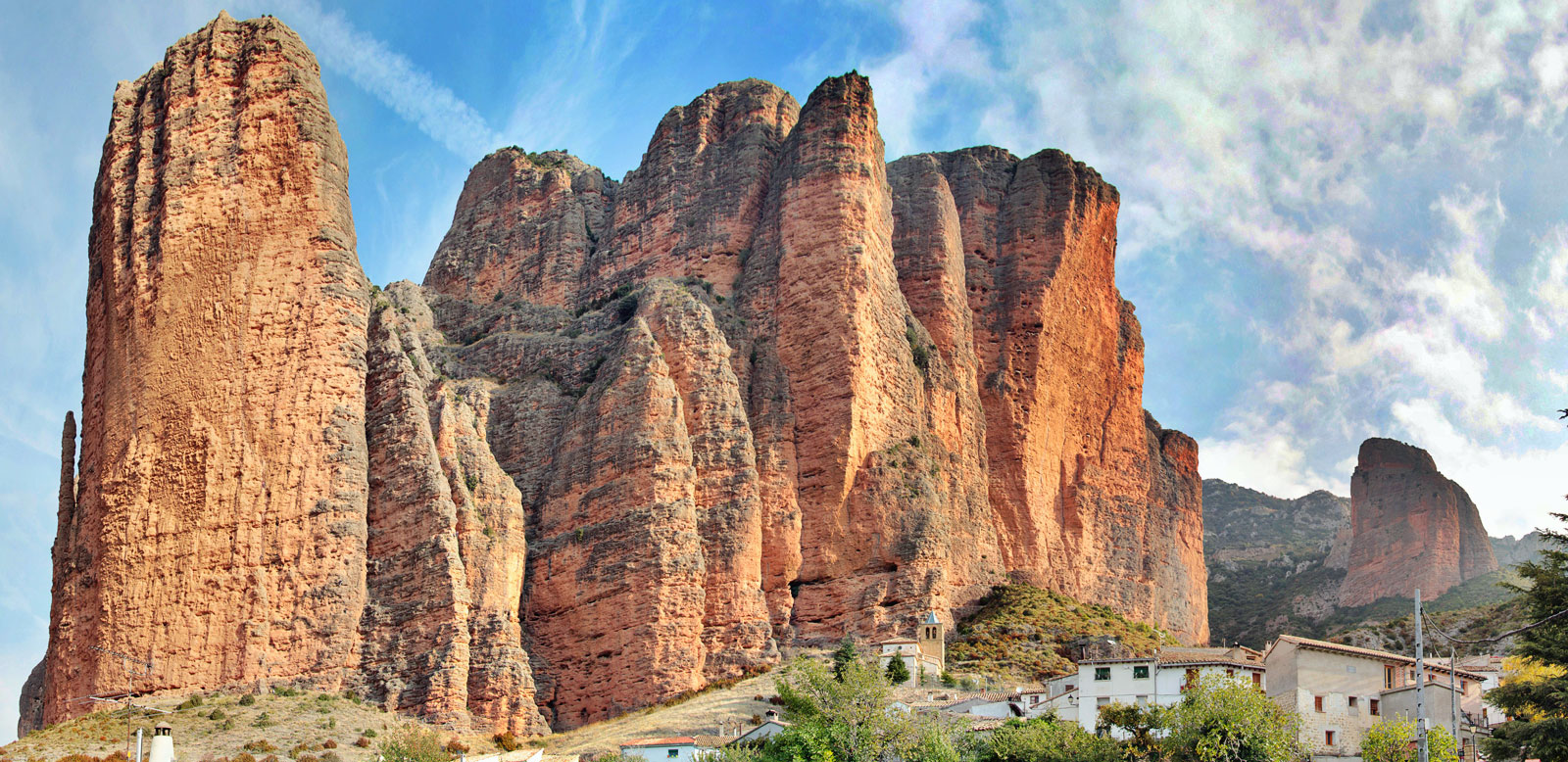
I am sure that very few had heard of Riglos until the French newspaper Le Monde placed this small town of about 250 inhabitants in the pre-Pyrenean region of La Hoya de Huesca in seventh position in its special ranking of the 20 most beautiful towns in the world (and only Spanish one) that it recommends visiting.
The reason is not lacking for the publication, because the picturesque municipality of sloping white houses, on the banks of the Gállego River, is located in a spectacular natural setting, unique in Aragón, declared a Natural Monument for its scenic value and headed by impressive geological formations reddish in colour with vertical walls up to 300 m high, called Mallos.

This location is a great attraction for climbers, hikers and fans of birds of prey, the town is located at the foot of those imposing walls, formed over millions of years, which makes it inevitable to raise the view (and the camera lenses) towards its peaks while strolling through its streets. The charm of the town centre is in the tranquillity of the surroundings and in the simplicity of its stone constructions. At the entrance to the town, the small Romanesque hermitage of San Martín (12th century) stands out, with a single nave, while, in the upper part, almost at the base of the Mallos, the imposing church of Nuestra Señora del Mallo (s XVII), with three naves and a square-shaped tower with a bell tower, is the most emblematic construction in the town, whose setting, with the rock formations in the background, is one of the most beautiful in the area.
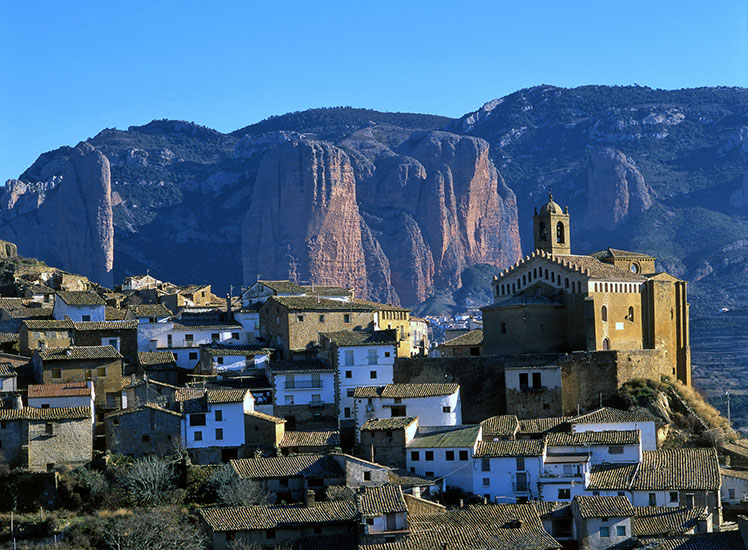
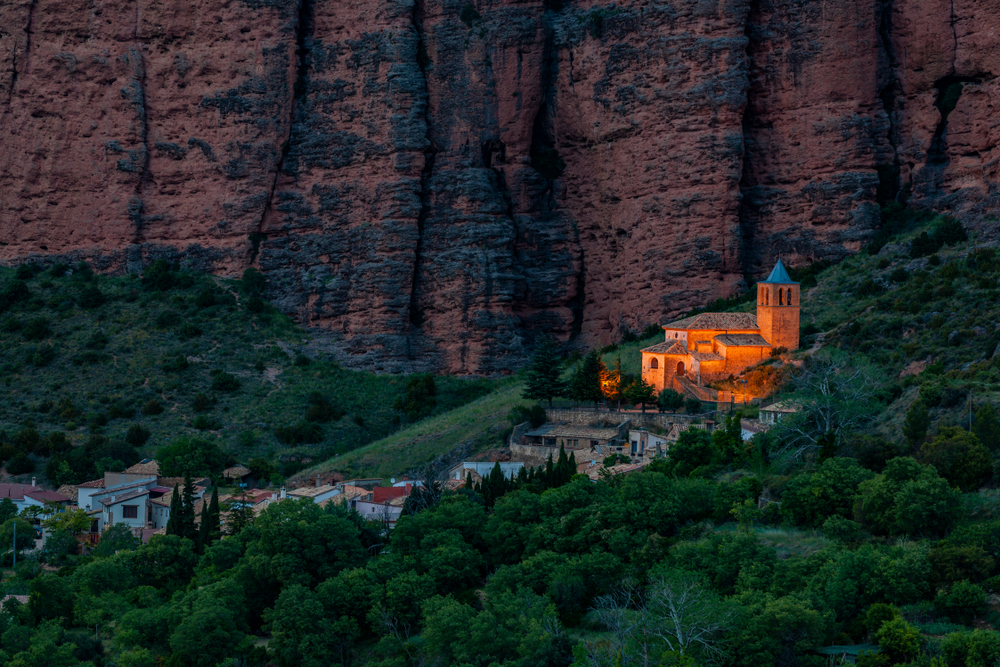
In recent years, the Mallos de Riglos has become a mecca for climbers from all over the world, thanks to the more than 200 existing climbing routes, most of them of high difficulty. Ornithology lovers also have an interesting place here due to the enormous presence of rock-dwelling birds, which have their habitat in the multiple hollows of the Mallos. These birds, mostly protected raptors, such as vultures, bearded vultures and Egyptian vultures, can be seen flying over the rounded tops. Specifically, in the Wall of the Vultures, there is one of the largest colonies of this species in Europe.
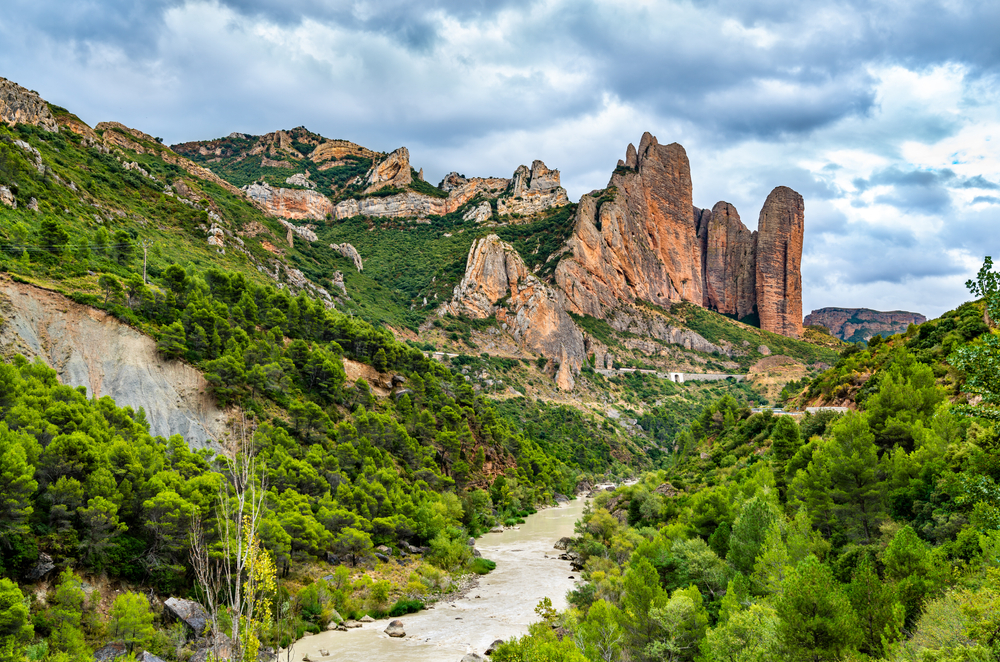
To get a better view of the Mallos, there are several signposted hiking trails that run through these impressive formations. One of the most popular is the so-called Vuelta a Los Mallos de Riglos, a circular route of about 5.5 km (about two and a half hours) that allows you to contemplate the grandeur of the enormous vertical stone walls from all sides. The path begins in the same town, ascends between the easternmost Mallos and passes through several viewpoints, the Vultures, the Espinalba or the Mallos de Riglos, with the river Gállego in the foreground.
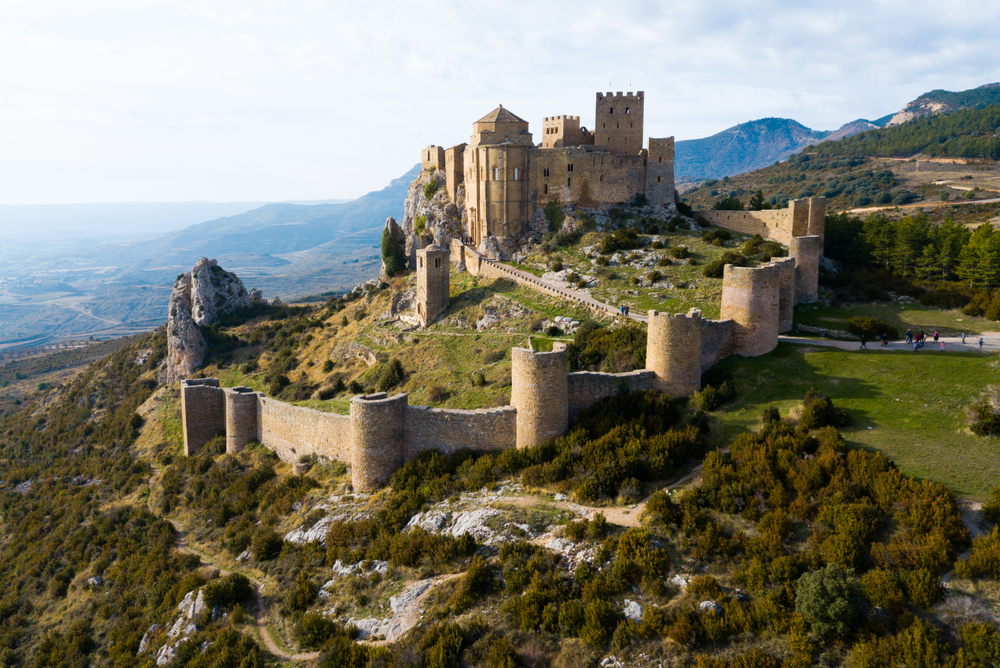
Just 20 km from Riglos is one of the most incredible buildings in Spain, a must-see if you are in the area. It is the Loarre Castle, one of the most beautiful and best-preserved fortresses in our country. Considered one of the most important Romanesque ensembles in Europe and declared a Site of Cultural Interest and a National Monument, the medieval castle, built in the 11th century by Sancho III, stands on a promontory of limestone rock in the Sierra de Loarre, Huesca.
The complex is surrounded by a great wall built-in 1287 that covers some 10,000 square meters and has a perimeter of 172 meters. Inside the fortress, the small chapel, the crypt of Santa Quiteria and the church of San Pedro stand out. Despite being almost 10 centuries old, its state of preservation is excellent. In addition to hosting events, the castle has been the setting for several films, such as Ridley Scott's Kingdom of Heaven (2005). It is open for visits on weekends and holidays.